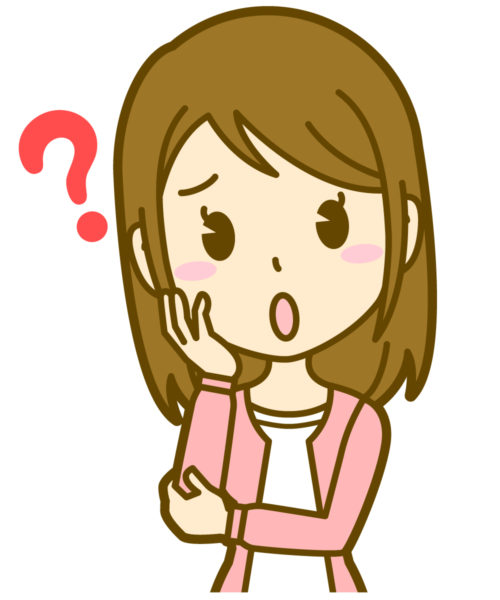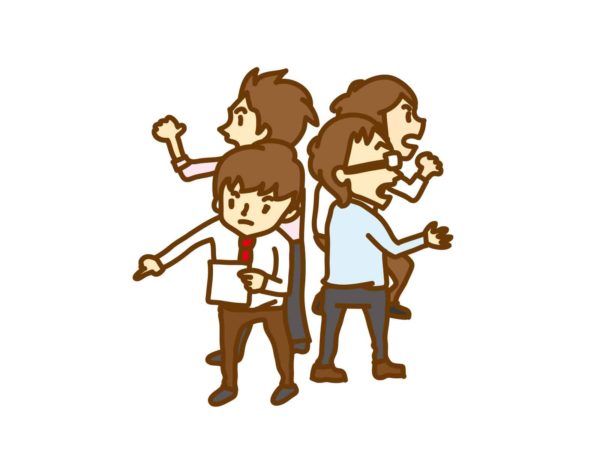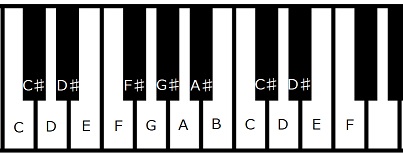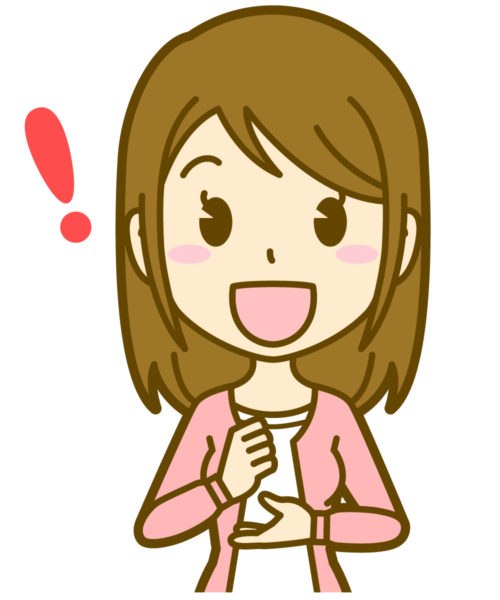音楽や楽譜の中でピアノコードや単にコードと言うものがあります。
今回はこのコードで代表的なメジャーコードとマイナーコードを説明していきます。
ピアノコードって何?

そもそもピアノコードとは何か説明できますか?
ピアノコードとはコードをピアノで演奏するために表したものです。
ではコードとは何でしょう?
コードとは英語で「Chord」と記載するもので、日本語で「和音」のことです。
和音は3つ以上の音を同時に弾いた音のことです。
試しに「ド・ミ・ソ」を同時に押し続けてみましょう。
これで一つのコードになっています。
コードの役割

コードの役割は分かりやすく言うと「曲の雰囲気を作ること」です。
その曲が明るい曲なのか、暗い曲なのか、悲しい曲なのかを聞き手に分かりやすく表してくれます。
右手でメロディーを弾いているところに、左手でコード(和音)が入るだけで、曲に厚みが出ていきます。
そしてこれを逆に言えば、曲の特徴からその部分部分をコードに分解できるわけです。
例えば、クラシックのオーケストラで演奏するような曲は、様々な楽器が使われているにもかかわらず、ピアノ単体の楽譜で、ある程度表現できます。
これはその様々な楽器の中の主となる音(明るさや暗さなどを表現している音)をコードに分解しているからなんです。
特に楽譜の左手に対応する部分は、このコードをアレンジしたり飾りをつけたりしているものが多く存在します。
ピアノコード一覧の前に
ピアノコードを紹介する前に覚えておいたほうがいいものを説明します。
それがこちら

ずばり「ドレミファソラシド」のアルファベット名です。
「ドレミファソラシド」=「C D E F G A B C」になっています。
ドはCからでそれ以降はアルファベット順になりますがGのあとはAに戻りますので注意してください。
コード名は一般的にアルファベット名で表すことが一般的です。
そのため、音とアルファベットを覚えることで、簡単にコードを覚えられるようになります。
例えば「C」のコードはアルファベット名の「C」のコードですので、「ド」を中心とした和音です。
同じように「Fm」のコードはアルファベット名の「F」のコードですので、「ファ」を中心とした和音になっています。
ピアノコード一覧
コードには非常に多くの種類があります。
同じピアノコードでも音の組み合わせで、弾き方は数種類あったりもします。
数えたことはありませんが、数百種類以上あるかと思います。
今回はその中でもよく使われるメジャーコードとマイナーコードを一部紹介します。
メジャーコード
| コード名 | 対応音 | 鍵盤の場所 |
| C | ド・ミ・ソ C・E・G |  |
| D | レ・ファ♯・ラ D・F♯・A |  |
| E | ミ・ソ♯・シ E・G♯・B |  |
| F | ファ・ラ・ド F・A・C |  |
| G | ソ・シ・レ G・B・D |  |
| A | ラ・ド♯・ミ A・C♯・E |  |
| B | シ・レ♯・ファ♯ B・D♯・F♯ |  |
メジャーコードの特徴は「明るい」と感じやすいことです。
人によって捉え方は違いますが、多数の人はすべてのメジャーコードを聞いて明るい気分になるでしょう。
マイナーコード
| コード名 | 対応音 | 鍵盤の場所 |
| Cm | ド・レ♯・ソ C・D♯・G |  |
| Dm | レ・ファ・ラ D・F・A |  |
| Em | ミ・ソ・シ E・G・B |  |
| Fm | ファ・ラ♯・ド F・A♯・C |  |
| Gm | ソ・ラ♯・レ G・A♯・D |  |
| Am | ラ・ド・ミ A・C・E |  |
| Bm | シ・レ・ファ♯ B・D・F♯ |  |
メジャーコードとは反対に「暗い」「悲しい」気持ちになる音が特徴です。
独特の不協和音に感じる人が多いかと思います。
メジャーコードとマイナーコードの覚え方

数あるコードの中で、このメジャーコードとマイナーコードはよく使われるコードですが、実は簡単な覚え方があります。
これらは3つの和音ですので、その3つの音を①②③として説明します。
メジャーコード
- ①:アルファベット名に対応した鍵盤
→「G」ならアルファベット名の「G」なので「ソ」
- ②:①の鍵盤から黒鍵を入れて「4つ」先の鍵盤
→「G」なら①の「ソ」から「ソ♯」「ラ」「ラ♯」の次の「シ」
- ③:②の鍵盤から黒鍵を入れて「3つ」先の鍵盤
→「G」なら②の「シ」から「ド」「ド♯」の次の「レ」
マイナーコード
- ①:アルファベット名に対応した鍵盤
→「Cm」ならアルファベット名の「C」なので『ド』
- ②:①の鍵盤から黒鍵を入れて「3つ」先の鍵盤
→「Cm」なら①の「ド」から「ド♯」「レ」の次の『レ♯』
- ③:②の鍵盤から黒鍵を入れて「4つ」先の鍵盤
→「Cm」なら②の「レ♯」から「ミ」「ファ」「ファ♯」の次の『ソ』
以上が覚え方です。
簡単ですね。
鍵盤の音さえ分かればどの順番で弾いても構いません。
例えば「C」のコードは「ド・ミ・ソ」ですが「ミ・ソ・ド」や「ソ・ド・ミ」でも同じ「C」のコードになります。
以上がメジャーコードとマイナーコードの説明でした。
習うより慣れろです。簡単な曲からコードを弾いていって肌で感じてみてください。
河瀬 あおい says
・今まで、ピアノには少し興味がありましたが、コード(メジャーコードとマイナーコード)というものじたい知らなかったので、とても助かりました。
・ピアノは、初心者なので少しでも覚えられたらと思います。